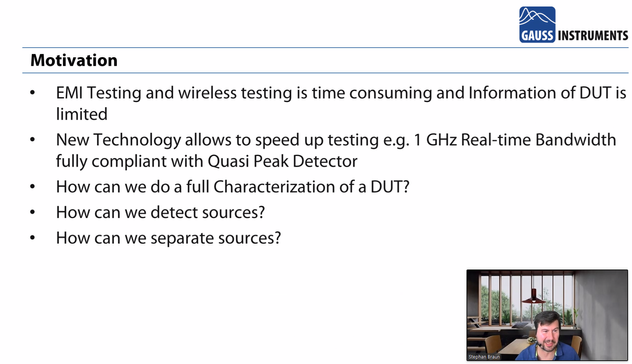Kleiner Rückblick auf unseren letzten #EMCProfessionalTalk des IEEE German EMC Chapters mit Stephan Braun von GAUSS INSTRUMENTS zum Thema "Correlation Measurements Methods and Practical Applications for #ElectromagneticInterference #EMI Testing" vom letzten Mittwoch.
#electromagneticinterference
Yunohost Install screen taken via a vga cable to an LCD screen.
Looks like there was lots of electromagnetic interference around.
However I quite like the retro vibe that this glitch appeared as.
#yunohost #glitch #emf #electromagneticinterference #vga #lcdscreen #lcd
Referenced link: https://phys.org/news/2022-10-mxene-composite-electromagnetic-absorbing.html
Discuss on https://discu.eu/q/https://phys.org/news/2022-10-mxene-composite-electromagnetic-absorbing.html
Originally posted by Phys.org / @physorg_com@twitter.com: https://twitter.com/physorg_com/status/1582745402792882176#m
#MXene composite could eliminate #electromagneticinterference by absorbing it @cellpressnews https://linkinghub.elsevier.com/retrieve/pii/S2666386422003678 https://phys.org/news/2022-10-mxene-composite-electromagnetic-absorbing.html
Measuring Electromagnetic Fields With Just an Arduino and a Piece of Wire
Electromagnetic interference problems can be a real headache to debug. If you need to prove what causes your WiFi to slow down or your digital TV signal to drop, then the ability to measure electromagnetic fields (EMF) can be a big help. Professional equipment is often very expensive, but building an EMF detector yourself is not even that difficult: just take a look at Arduino expert [Mirko Pavleski]'s convenient hand-held electromagnetic field detector.
The basic idea is quite simple: connect an antenna directly to an Arduino's analog input and visualize the signal that it measures. Because the input of an ADC is high impedance, it is very sensitive to any stray currents that are picked up by the antenna. So sensitive in fact, that a resistor of a few mega-Ohms to ground is required to keep the sensor from triggering on any random kind of noise. [Mirko] made that resistance adjustable with a few knobs and switches so that the detector can be used in both quiet and noisy environments.
Making the whole device work reliably was an interesting exercise in electromagnetic engineering: in the first few iterations, the detector would trigger off its own LEDs and buzzer, trapping itself in a never-ending loop. [Mirko] solved this by encasing the Arduino inside a closed, grounded metal box with only the required wires sticking out. The antenna's design was largely based on trial-and-error; the current setup with a 7 cm x 3 cm piece of aluminium sheet seemed to work well.
While this is not a calibrated professional-grade instrument, it should come in handy to find sources of interference, or even simply to locate hidden power cables. You can view this as a more advanced version of [Mirko]'s Junk Box EMF Detector; if you have a second Arduino lying around, you can use that one to generate interference instead.
#toolhacks #antenna #electromagneticinterference #emfdetector
Unable to account for the strange glitches he was seeing on his DIY CNC router, [Daniël Van Den Berg] wondered if his electronics might be suffering from some form of electromagnetic interference (EMI). So he did what any good hacker would do, and rummaged through the parts bin to build an impromptu EMI detector.
[Daniël] is quick to point out that he's not an electrical engineer, and makes no guarantees about the accuracy of his tossed together gadget. But it does seem to work well enough in his testing that he's able to identify particularly "noisy" electronic components, so it's probably worth putting one together just to hear what your hardware is pumping into the environment.
The hardware here is very simple, [Daniël] just attached a coil of solid copper wire to one of the analog pins on an Arduino Nano with a resistor, and hung a speaker off of one of the digital pins. From there, it just took a few lines of code to read the voltage in the coil and convert that into a tone for the speaker. The basic idea is that a strong alternating magnetic field will set up voltage fluctuations in the coil large enough for the Arduino's ADC to read.
If you're looking for a bit more insight into what kind of interference your electronic creations might be putting out, [Alex Whittimore] gave a fantastic presentation during the 2020 Hackaday Remoticon about performing RF debugging using a cheap RTL-SDR dongle.
#arduinohacks #toolhacks #arduinonano #electromagneticinterference #emi #emiprobe

